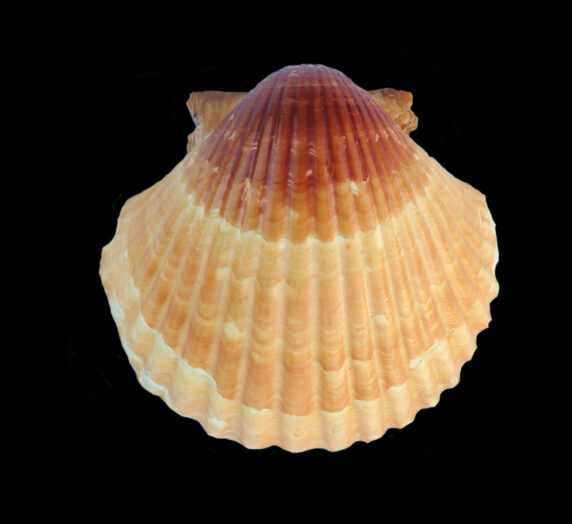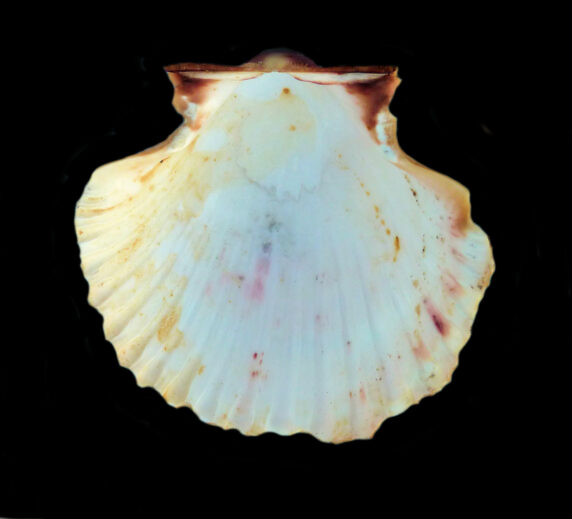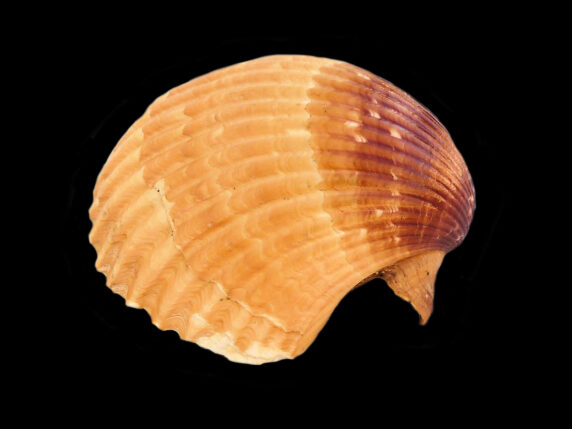Concave Scallop Shell, Euvola vogdesi


 Concave Scallop Shell, Euvola vogdesi. Shell collected from within the estuary of the Magdalena Bay complex, Baja California Sur, October 2018. Size: 6.6 cm (2.6 inches) x 7.0 cm (2.8 inches).
Concave Scallop Shell, Euvola vogdesi. Shell collected from within the estuary of the Magdalena Bay complex, Baja California Sur, October 2018. Size: 6.6 cm (2.6 inches) x 7.0 cm (2.8 inches).
The Concave Scallop, Euvola vogdesi (Arnold, 1906), is a bivalve mollusk that is a member of the Pectinidae Family of Scallop Shells. They are also known as the Mexican Deep Scallop and as Vogde’s Scallop and in Mexico as almeja voladora and viere de Vogde. Their Mexican common name “Volador” or flying clam, stems from their ability as swimmer rapidly, generated by a rapid and closing of their values. This species was named in honor of Andrew Wayne Vogdes, a famous Paleontologist and a significant player in the history of the San Diego Natural History Museum. The shell has a slightly concave left valve and a very convex right value for which it is named. The left valve has radiating flat ribs and the right valve as rounded ribs. The shell has an overall reddish-brown exterior and the right valve has a buffy yellow to orange tinge. The Concave Scallop shell reach a maximum length of 11.7 cm (4.6 inches) and 10.7 cm (4.2 inches) in height.
The Concave Scallops are found over and within sand and mud substrate, in the intertidal zone to depths of 155 m (510 feet). These shells are found from Southern California to Peru including the entire Sea of Cortez. Concave Scallops are edible and are farmed, fished and sold commercially.
Synonyms include Argopecten vogdesi, Pecten cataracts, Pecten dentatus, Pecten excavates, Pecten heimi, and Pecten vogdesi.